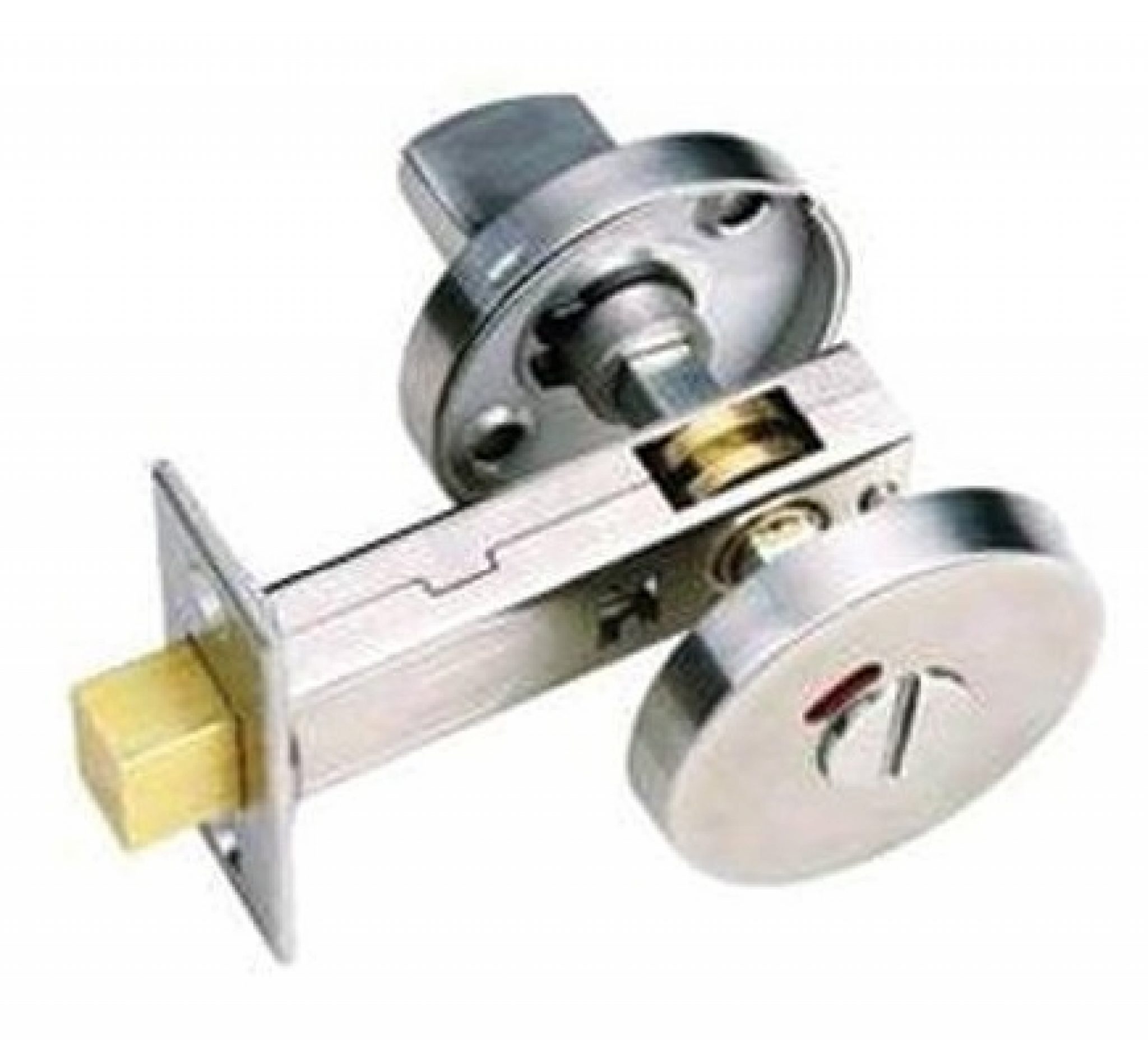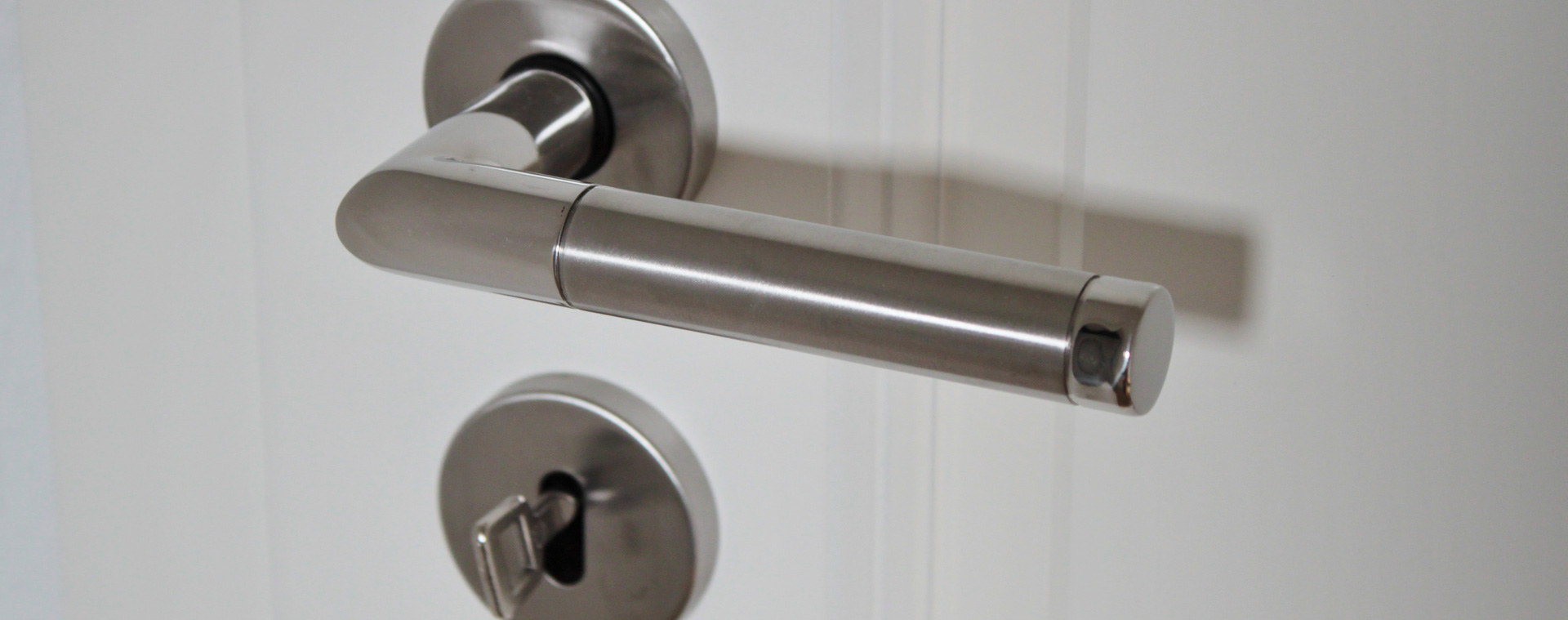Types of Bathroom Door Locks: Types Of Locks For Bathroom Doors

Bathroom door locks are essential for privacy and security, and they come in a variety of styles and functionalities to suit different needs and preferences. Understanding the different types of locks available can help you choose the best option for your bathroom.
Lever Handles
Lever handles are a popular choice for bathroom doors due to their ease of use and modern aesthetics. They are typically operated by pushing down on the lever, which engages the latch.
- Privacy Lever Handles: These are designed for privacy, and they can be locked from the inside with a simple turn of the knob or lever. They can be unlocked from the outside with a key or a simple tool, such as a credit card. These are often used in bedrooms and bathrooms.
- Passage Lever Handles: These are designed for easy access and are typically used in hallways and other areas where a lock is not required. They cannot be locked from the inside or outside, making them ideal for areas where people need to pass through freely.
- Dummy Lever Handles: These are purely decorative and do not have any locking mechanism. They are often used in areas where a lock is not required, but a handle is desired for aesthetic purposes.
Knobs
Knobs are another common type of bathroom door lock. They are typically operated by turning the knob, which engages the latch.
- Privacy Knobs: Similar to privacy lever handles, these knobs can be locked from the inside with a simple turn. They can be unlocked from the outside with a key or a simple tool.
- Passage Knobs: These are similar to passage lever handles, allowing free access without the need for a key.
- Dummy Knobs: Like dummy lever handles, these are purely decorative and have no locking mechanism.
Deadbolts
Deadbolts are a more secure type of lock that is often used in conjunction with lever handles or knobs. They provide an additional layer of security by extending a bolt into the doorjamb when locked.
- Single Cylinder Deadbolts: These have a keyhole on the outside and a turn knob on the inside. They can be unlocked from the outside with a key and from the inside with a turn of the knob.
- Double Cylinder Deadbolts: These have a keyhole on both the inside and outside. They can only be unlocked with a key, making them more secure but less convenient.
Privacy Locks
Privacy locks are specifically designed for bathroom doors and offer a balance of privacy and security. They can be locked from the inside with a simple turn of the knob or lever, and they can be unlocked from the outside with a key or a simple tool, such as a credit card. These locks typically feature a “privacy button” or a “push-button” that allows the lock to be unlocked from the outside without a key. This feature is useful in case someone is locked inside the bathroom and needs to be let out.
Table: Bathroom Door Lock Types
| Lock Type | Features | Pros | Cons |
|---|---|---|---|
| Lever Handles | Easy to use, modern aesthetics, available in various styles | Comfortable to use, can be easily operated by people with limited mobility | May not be as secure as deadbolts |
| Knobs | Traditional style, available in various materials and finishes | Affordable, easy to install | May be difficult to use for people with limited mobility |
| Deadbolts | Increased security, can be used in conjunction with lever handles or knobs | Offers additional security, can be used for both privacy and security | May be more expensive than other lock types, can be more difficult to install |
| Privacy Locks | Designed for privacy, can be locked from the inside and unlocked from the outside with a key or a simple tool | Offers a balance of privacy and security, easy to use | May not be as secure as deadbolts |
Lock Mechanisms and Functions

The inner workings of a bathroom door lock are fascinating, and understanding them is crucial for choosing the right lock for your needs. This section delves into the different lock mechanisms used in bathroom door locks and how they function, exploring their security levels and the various lock functions available.
Lock Mechanisms
Lock mechanisms are the core components that determine how a lock operates and the level of security it provides. Here are some common mechanisms found in bathroom door locks:
- Key-operated Locks: These locks are the most traditional and rely on a key to unlock the mechanism. The key inserts into the lock cylinder and turns, engaging the tumblers within the cylinder to release the latch. Key-operated locks offer varying levels of security depending on the quality of the cylinder and the complexity of the key design.
- Thumb Turn Locks: These locks use a small, round knob called a thumb turn to operate the latch. They are commonly used in bathroom doors because they are easy to use and can be operated from both sides of the door. However, thumb turn locks are generally considered less secure than key-operated locks because they can be easily picked or forced open.
- Push-button Locks: These locks are operated by pressing a button or a series of buttons. They often feature a combination lock system, requiring the user to enter a specific code to unlock the door. Push-button locks are relatively secure, but they can be vulnerable to brute force attacks if the code is easy to guess.
Lock Functions
Bathroom door locks can have different functions, depending on the specific requirements of the installation. Some common lock functions include:
- Single-sided Locks: These locks can only be unlocked from one side of the door. They are commonly used in bathrooms where the lock is only needed to provide privacy from the inside.
- Double-sided Locks: These locks can be unlocked from both sides of the door. They are ideal for bathrooms where the lock is needed for both privacy and security.
- Keyed-alike Locks: These locks are designed to use the same key for multiple doors. This is convenient for homes or businesses where several doors need to be unlocked with the same key.
Lock Mechanisms, Functions, and Security Levels
The following table summarises the different lock mechanisms, their functions, and the level of security they offer:
| Mechanism | Function | Security Level |
|---|---|---|
| Key-operated | Single-sided, double-sided, keyed-alike | High (depending on cylinder quality and key complexity) |
| Thumb turn | Single-sided, double-sided | Medium (vulnerable to picking and forcing) |
| Push-button | Single-sided, double-sided | High (depending on code complexity and lock quality) |
Considerations for Choosing Bathroom Door Locks

Selecting the right bathroom door lock is crucial for ensuring privacy, security, and functionality. It’s a decision that should be carefully considered, taking into account various factors that directly impact your choice.
Budget
The cost of bathroom door locks can vary significantly, ranging from budget-friendly options to premium, high-security models. Understanding your budget is essential for narrowing down the selection. If you’re on a tight budget, consider basic deadbolt locks or lever handles with a simple locking mechanism. For a more luxurious feel and enhanced security, explore options with features like keyless entry, smart locks, or decorative finishes.
Security Needs
The level of security you require for your bathroom door depends on the location and your personal preferences. If you live in a high-crime area or have valuable belongings in your bathroom, a robust deadbolt lock with a strong strike plate is recommended. For a shared bathroom or guest room, a simple privacy lock might suffice.
Desired Level of Privacy
The privacy you need in your bathroom is a major factor in choosing a lock. A basic privacy lock allows for simple locking and unlocking, while a deadbolt offers greater security and privacy. For shared bathrooms, consider locks with a “privacy” or “occupied” indicator to alert others when the bathroom is in use.
Aesthetic Preferences
Bathroom door locks are available in various styles and finishes to complement your bathroom’s décor. Consider the overall design of your bathroom and choose a lock that blends seamlessly. You can select from traditional, modern, or contemporary styles, and finishes like brushed nickel, polished chrome, or oil-rubbed bronze.
Choosing the Right Lock for Different Bathroom Settings, Types of locks for bathroom doors
- Shared Bathrooms: For shared bathrooms, a simple privacy lock is typically sufficient. Look for locks with a clear “privacy” or “occupied” indicator to prevent accidental entry. Consider a lever handle lock for ease of use, especially for children or elderly individuals.
- Master Bathrooms: Master bathrooms often require a higher level of security and privacy. A deadbolt lock with a strong strike plate provides enhanced protection. You can also explore smart locks with features like keyless entry or remote control for added convenience.
- Guest Rooms: Guest rooms usually require a basic privacy lock for security and privacy. A lever handle lock is a good option for guest rooms as it’s easier to operate than a traditional knob lock.
Flowchart for Selecting a Bathroom Door Lock
[Insert flowchart here. The flowchart should guide users through the decision-making process based on the factors discussed above.]
